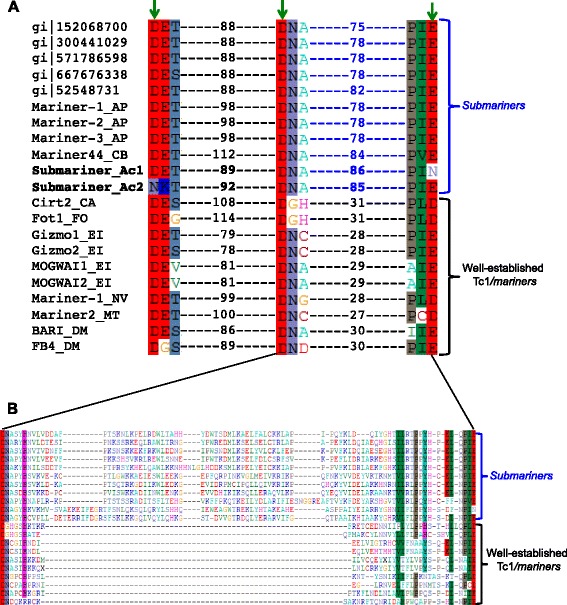Fig. 3.

The DDE signature in Submariner transposases. a Sequences are identified by their GenBank accession numbers or Repbase IDs, if applicable. These accession numbers and Repbase IDs correspond to the nucleotide sequences from which the transposase amino acid sequences were deduced. Green arrows indicate the DDE amino acid triad that coordinates metal ion (Mg2+) binding during catalysis of typical cut-and-paste transposition. The DDE residues are shown within their respective conserved motifs (DET, DNA, and PIE). Numbers flanked by dashes indicate the number of amino acid positions that separate the conserved motifs based on a multiple sequence alignment. The 11 Submariner sequences have a much longer stretch of residues between the second D and the E residues than do representatives from the well-established Tc1/mariner clades. gi|152068700, gi|300441029, gi|571786598, and gi|667676338 are bacterial sequences, and gi|52548731 is an archaeal sequence; taxon information is in the text. Mariner-1-3_AP are from Acyrthosiphon pisum (pea aphid) and Mariner44_CB is from Caenorhabditis briggsae (nematode). b Multiple sequence alignment of the amino acids between the second D and the E residues showing the length difference between the Submariners and the other Tc1/mariners. Sequences are in the same order as in (a)
